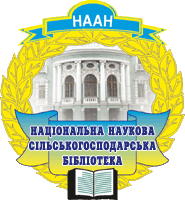 |
Electronic scientific professional edition |
| All numbers / 2018 No.2 / Article No.11 | ||||||
| 11 | Soil research of the Dnyster lower: first scientific achievements of professor N. Vernander (1901–1986) | full article | ||||
|
https://doi.org/
|
Pages: | 180-191 |  |
 |
||
| Summary | ||||||
|
With the application of general scientific principles of historical accuracy, scientific objectivity and continuity of general scientific and historical methods, source analysis highlights one aspect of the scientific heritage of the soil scientist Professor N. Vernander. It is noted that reclamation of land contributes to the preservation and improvement of soil fertility, increased yield and a decrease in the influence of fluctuations in the natural and climatic conditions on the results of production. Many years of research by scientists have contributed to the development and improvement of various types of melioration, among which irrigation is one of the most common. The contribution was made by Professor N. Vernander, summarizing the results of the work of the scientific expedition on topographic and soil-geological survey of the lower Dniester region in order to determine the areas suitable for irrigation. She proved that in the lower reaches of the Dniester has three terraces: the first – the flooded, the second – similar to the second terrace of most other major rivers (Wurm) and the third – fourth terraces similar to other rivers, such as the Dnieper (Günzach-Mindel). N. Vernander outlined the measures for rational management in the described area. Due to the fact that there is not enough precipitation in summer to ensure a harvest, first of all it is necessary to introduce irrigation. It is rational to apply water even to the ancient third terrace, to its great height. Instead of grain crops, it will be possible to grow garden crops and orchards. Salinization of soil water did not threaten the soil of the third terrace, because the water level is quite deep. Irrigation can impair the physical properties of developed black soil, causing partial washing of calcium, as well as mechanically destroy the structure. To prevent this, liming of the soil is useful. The vegetation of irrigated areas takes many nutrients from the soil, which must be renewed with organic and mineral fertilizers. From mineral fertilizers, one should avoid those that have monovalent ions, especially sodium, because they contribute to the destruction of the structure and the deterioration of the physical properties of the soil, which are already deteriorating under the influence of irrigation. All of this was mentioned and irrigation of terraced black soil without gypsum within the second terrace. |
||||||
| Keywords | ||||||
| agriculture, soil surveys, soil fertility, unsuitable areas, irrigation, terraces, solonetsousness, meliorative measures | ||||||
| References | ||||||
|
||||||
Title page of Edition
© National Scientific Agricultural Library NAAS, 2018